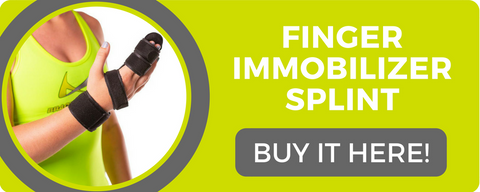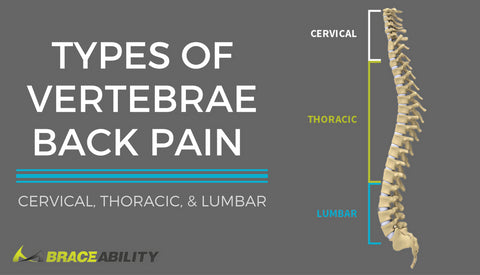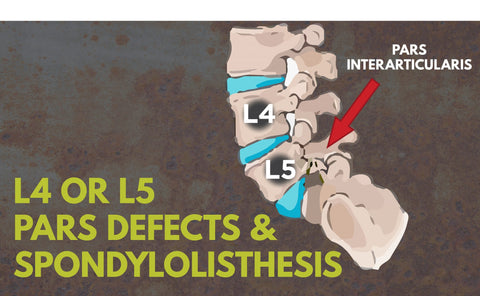All You Need to Know About Dupuytren’s Contracture
What is Dupuytren's Contracture?
Dupuytren’s Contracture is a hand deformity that causes your fingers to curl towards your palm. This curling is caused by the palmar fascia (palmar aponeurosis), a thin tissue that lays beneath the skin, thickening and pulling your fingers toward your palm.
This condition typically develops over the years and can progress to become more series if it is not treated. Usually, it only affects the ring finger and pinky finger. Dupuytren's Contracture can make simple, everyday tasks like putting your hands in your pocket, putting on gloves, or shaking hands with someone difficult.
The Vikings are to Blame: Where Viking Disease Got Its Name
Tradition tells us that Viking Disease, another name for Dupuytren’s Contracture (Disease), originated with the Vikings. As they traveled across Northern Europe and beyond, the Vikings began to intermarry with local people of the areas they traveled. The condition began to spread over the next hundreds of years. In the 19th century, Viking Disease was renamed after a famous French surgeon.
Viking Disease also goes by the names of Dupuytren’s Contracture, Dupuytren’s Disease, and Palmar Fibromatosis.
Are you wondering… Why do my fingers cramp and curl up? Do I have Dupuytren’s Contracture?
Try placing your hand flat on a tabletop, palm facing down. If you can’t fully straighten your fingers against the tabletop, it is definitely a possibility that you have Dupuytren’s Contracture. This contraction of your fingers is a tell-tale sign of the disease.
If you have Dupuytren’s Contracture, it will be obvious by the look of your hand. Below, you can see an image of what Dupuytren’s Contracture looks like.

If you hold your hands next to each other with your palms facing the ceiling, you will be able to see distinct differences between the two. In your affected hand, you will notice the following symptoms:
Symptoms of Dupuytren’s Contracture:
- Small lumps or nodules in the palm of your hand
- Fingers pulled toward the palm
- Skin may appear dimpled or puckered
- Thickening of the skin on your hand
- Cords of tissue may form under the skin of your palm
Dupuytren’s Contracture Lumps (Nodules)
The first symptom seen in a person affected by Dupuytren’s Contracture is nodules appearing right under the skin. This is caused by the tissues under your skin tightening. These nodules may be sensitive to the touch and tender at first, but this discomfort typically subsides after the condition continues to progress.
Risk Factors of Dupuytren’s Contracture
- Sex: Males are more likely to develop Dupuytren’s and have more serious contractures than women.
- Family History: Dupuytren’s Contracture is believed to be a hereditary disease.
- Age: Dupuytren’s Contracture affects people most commonly after the age of 50.
- Ancestry: People of Northern European descent are more likely to develop the disease.
- Tobacco and Alcohol Use: Alcohol intake and smoking are associated with Dupuytren’s Contracture. It’s believed this is due to tiny changes in blood vessels and your liver.
The Difference Between Trigger Finger and Dupuytren’s Contracture
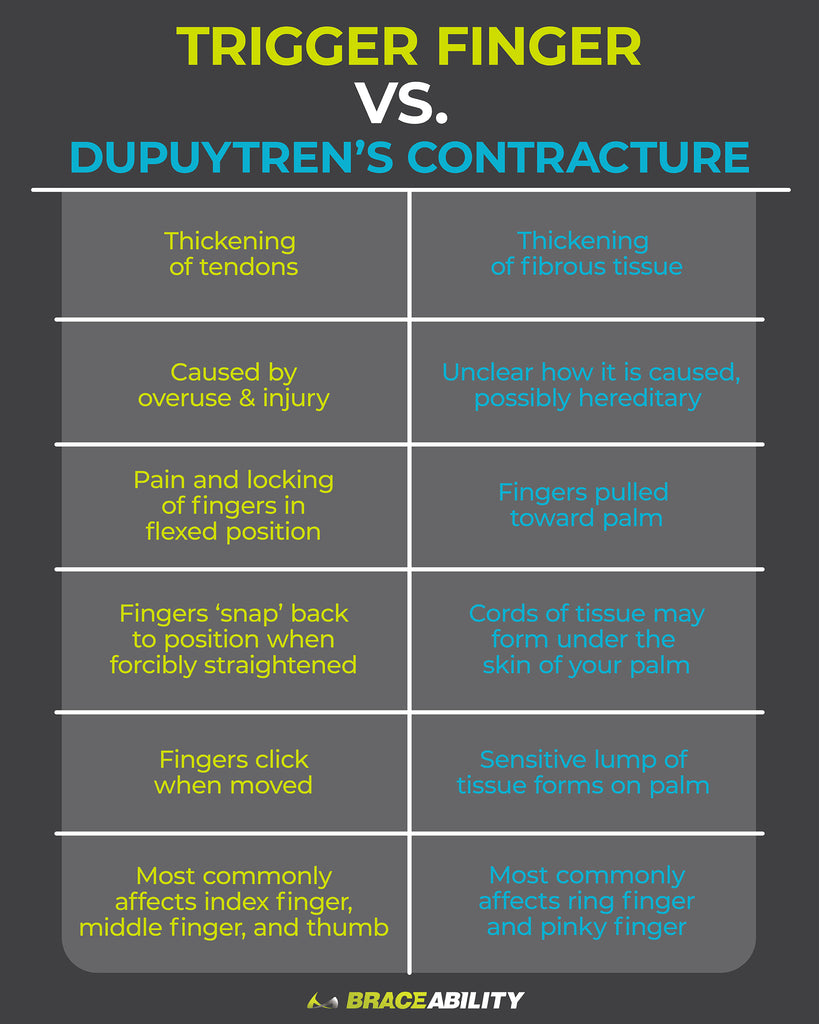
How to Determine if You Have Trigger Finger:
- Thickening of tendons
- Caused by overuse or injury
- Pain and locking of fingers in flexed position
- Fingers 'snap' back to position when forcibly straightened
- Finger clicks when moved
- Most commonly affects index finger, middle finger and thumb
If you are suffering from Trigger Finger, check out this hand immobilizer brace to help relieve the symptoms. If your Trigger Finger has progressed to a serious stage, there is the option of surgery to treat your condition.
How to Determine if You Have Dupuytren's Contracture:
- Thickening of fibrous tissue
- Unclear how it is caused, possibly hereditary
- Cords of tissue may form under the skin of your palm
- Sensitive lump of tissue forms on palm
- Most commonly affects the ring finger and the little finger
4 Stages of Dupuytren’s Contracture:
- Stage 1: Your finger will be bent 6º-45º.
- Stage 2: Your finger will be bent 46º-90º.
- Stage 3: Your finger will be bent 91º-135º.
- Stage 4: Your finger will be bent greater than 135º.
If you are experiencing these symptoms, it is recommended that you visit your doctor to determine the best treatment options for your condition.
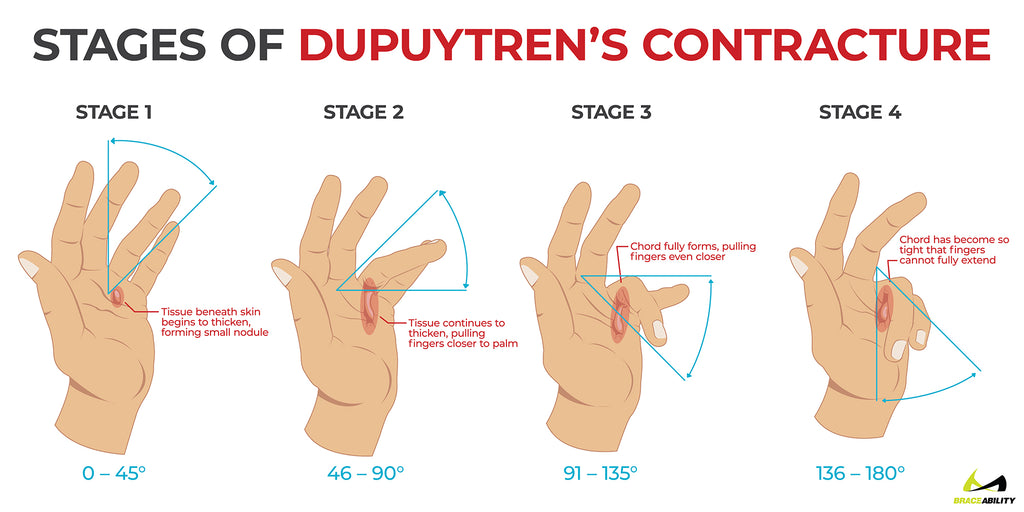 3 Treatment Options for Dupuytren’s Contracture
3 Treatment Options for Dupuytren’s Contracture
There are many treatment options to help Dupuytren’s Contracture including needling, enzyme injections, and surgery. All of these treatment options have the same goal: break apart the cords that are pulling your fingers toward your palm. In early stages of Dupuytren's Contracture, an immobilizer brace can help to keep fingers straight while you're at home or at work. The best treatment option for you will be determined by your doctor.
-
Dupuytren’s Contracture Treatment: Needling
During this treatment technique, a needle is inserted through your skin in order to puncture and break the cord of tissue that is causing your finger to contract. This technique is appealing to many because multiple fingers can be treated at once, helping them to release. No incision is made and little physical therapy is needed afterward. Although, sometimes this technique cannot be used because it could damage a nerve or tendon.
-
Dupuytren’s Contracture Treatment: Enzyme Injections
By injecting a certain type of enzyme into the cord in your palm, it can be softened and weakened, allowing your doctor to manipulate your hand to break the cord and straighten your fingers again. This treatment technique has similar pros and cons to the needling technique.
-
Dupuytren’s Contracture Treatment: Surgery
If your Dupuytren’s Disease is advanced, a surgical procedure to remove the tissue in your palm may be needed. The main advantage to surgery is that it results in a complete and long-lasting solution than the other methods. Although, more physical therapy will be needed following the procedure and there is a longer recovery time. The most common complication with this surgery is delayed wound healing. Other complications include infection, stiffness, tenderness, damage to the skin, nerve injury, loss of circulation and blood clots.








 3 Treatment Options for Dupuytren’s Contracture
3 Treatment Options for Dupuytren’s Contracture